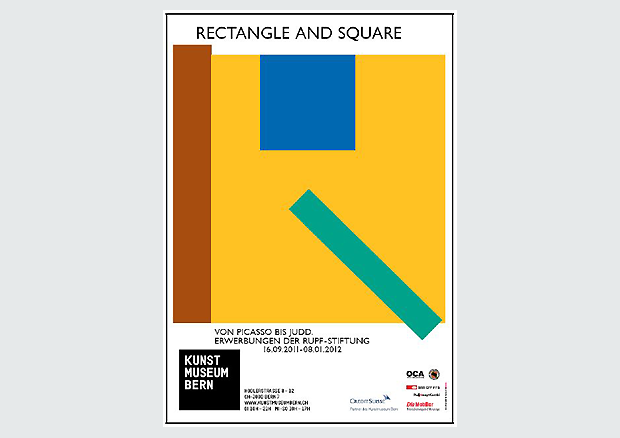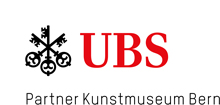„Rectangle and Square“. From Picasso to Judd - Acquisitions of the Rupf Foundation, 14.09.2011 - 08.01.2012
Modernist Classics and Contemporary Art face-to-face
At the beginning of the 20th century, Hermann and Margrit Rupf laid the foundations for a collection that is now regarded as one of the leading of its kind for European modern art. Due to the fact that a foundation was established in the 1950s in the Kunstmuseum Bern, the collection is open to the public and is being, up to the present and beyond, constantly enlarged. The exhibition presents modernist artworks in dialogue with contemporary art. Thus Pablo Picasso is confronted by Meret Oppenheim, Fernand Léger meets Donald Judd, and Paul Klee finds himself face-to-face with Ilya Kabakov.
The exhibition is showing a representative selection of the Rupf Foundation accessions. The modernist artworks chosen for the exhibition are being shown in the immediate vicinity of contemporary art, encouraging a dialogue between the different epochs.
A world-class collection
As the joint proprietor of
the haberdashery store Hossmann & Rupf at Waisenhausplatz in Bern
retailing sewing tools, socks and stockings, as well as gloves, Hermann
Rupf (1880 – 1962) became interested in art early on in life. While
learning the banking trade in Frankfurt around the turn of the century
he made the acquaintance of Daniel-Henry Kahnweiler. The latter was to
shortly become one of the leading art dealers in Paris. Rupf regularly
paid the friend of his youth a visit when purchasing haberdashery wares
in the French metropolis. He was among Kahnweiler’s very first clients
and they remained close and lifelong friends. Besides collecting,
Hermann and Margrit Rupf were highly supportive of artists, often also
giving them advice. Hermann Rupf was likewise an art critic and very
committed to establishing acceptance and popularity of contemporary art.
Hermann and Margrit Rupf’s collection is world class: As the first
private Swiss collectors intensely interested in abstract art, the
couple collected works only shortly after their completion (from 1907
onwards). The collection holdings boast, among many others, groups of
works by the fauves (Othon Friesz and André Derain), the cubists
(Georges Braque, Pablo Picasso, Juan Gris, and Fernand Léger) as well as works by Paul Klee, Wassily Kandinsky, and André Masson. Not only a
multitude of masterpieces makes this collection remarkable, but also the fact that Hermann Rupf acquired the majority of them in the same year
they were executed.
An overview of over 100 years of art history due to new accessions
In 1954 Hermann and Margrit Rupf not only entrusted their collection with
approximately 300 works to the Kunstmuseum Bern, but also provided an
endowment for further pursuing the goals of the Foundation – that is,
“preserving, adding to, and enlarging the donated art collection.” Today the Rupf Foundation collection holds over 1100 works. The Foundation
focuses – just as the collector couple had previously done – especially
on purchasing contemporary art. However, in contrast to the small
formats typical for the Rupf’s private collection, the Foundation
additionally collects largeformat artworks and installations. It has
purchased works of concrete or minimal art, from Group Zero or artists
such as Markus Raetz, Vaclav Pozarek, and Meret Oppenheim. The
Foundation holdings are therefore able to offer an overview of over one
hundred years of art history.
"Rectangle and Square": geometric, constructive, and conceptual artworks
Alfred Jensen’s large-format painting Rectangle and Square (1968), from hence
the exhibition has its name, points out a guiding principle behind the
collection: In continuation of its emphasis on cubism, figurative works
are scarce among the Foundation’s acquisitions, which mainly purchases
geometrical, constructive, and conceptual artworks.


